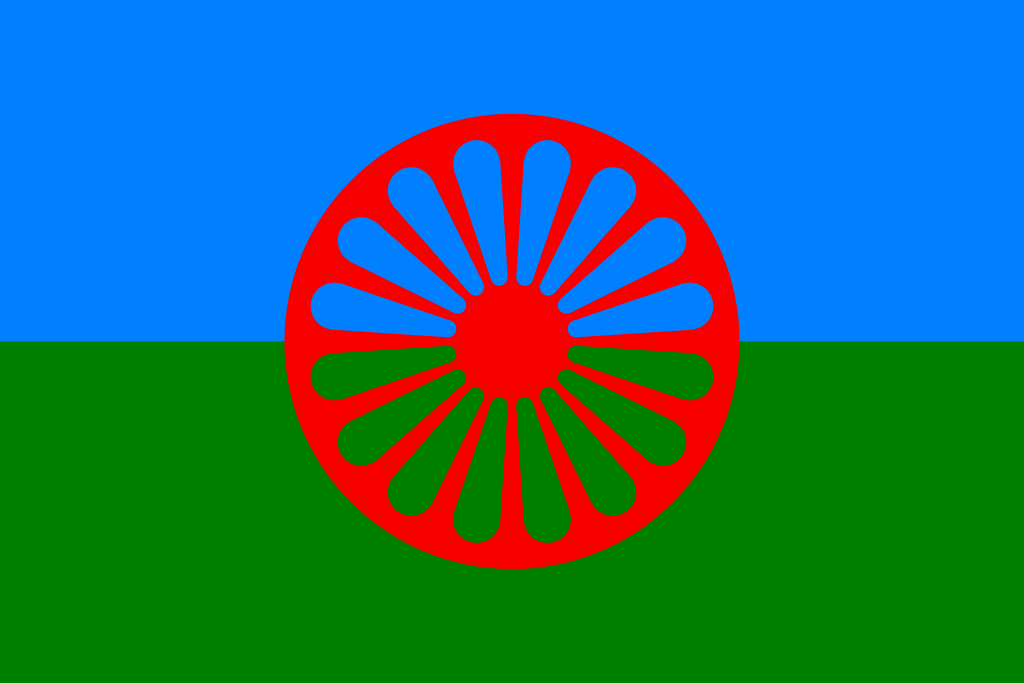The History and Culture of The Roma People
Today, 8 April marks International Roma Day. Roma people make up an important part of today’s Govanhill community. So in Issue 2 of the magazine, we published this article exploring their rich history and culture.
By Emilia Gaziova \ Photos by the Roma Youth Photography Group
Many of the Roma who now call Govanhill home, started to settle here after the EU expansion in 2004, although some came earlier to apply for asylum. Along with many others, I arrived here having left behind an environment of racism and prejudice. In some countries in Eastern Europe, Roma do not have the same equality of opportunity when it comes to basic work benefits such as contracts, minimum wages and paid leave.
In Govanhill, however, we have organizations – such as Community Renewal, Romana Lav, GCDT, The Well – which do their best to help the Roma who live here. One of the most striking and positive changes is that people from Roma communities are increasingly involved in addressing these challenges. Since some Roma tend to be distrustful of authorities, they find it much easier to accept help or apply for advice when dealing with people from their community.
The organizations where Roma staff work act like a beacon for Roma people. They know that they will have no problem understanding and that they can rely on them. Many find they can finally feel safe in the country they've spent so many years in.
But despite the prevalence of Roma in this neighbourhood, many others do not understand our history, culture and language. So, in this article, I wanted to give you a bit of background to my people.
In the beginning
Genetic and linguistic evidence suggest that the Roma have ancient Indo-Iranian or Aryan origin, and hail from the northern Indian subcontinent. However, about a thousand years ago, the Roma started to move out of this region and made a great journey to Europe and beyond. The exact reason for this move is still unknown. This was their first journey, but not their last one. Today, there are about 20 million Roma all around the world.
A history of persecution
Romani academic, Yanko le Redžosko, states that Roma in Europe were kept in slavery from 1856-1864, mostly in the Balkans (the territory that is now Romania) and also in other parts of Europe. They were put to work as blacksmiths, gold diggers and agricultural workers. Later, the Roma were used as domestic servants.
According to the National Museum of World War II, the first official attack against Roma dates back to 1885. The Bavarian Government had adopted a law tightening the distribution of licenses to Roma traders. This law made it possible to arrest or expel Roma who did not have the correct documents, which made entrepreneurship and development more difficult.
In 1933, a program was set up in Germany to wipe out the Roma, along with other minorities after Hans Globke claimed that: “Gypsies are of alien blood." More than 1.5 million Roma were killed in the Holocaust, a fact that is commemorated by a plaque here in Queen’s Park.
The Roma Today
Fortunately, such atrocities are not happening these days, but there is still a lot of discrimination against Roma in employment, education, and health. Hate speech against Roma is common across Europe.
Over the last few years, various NGOs, both national and international, have addressed Roma issues. Different approaches are being applied – economic, social, political and cultural – in the hope of improving the living standards of the Roma, promoting a fairer social policy and strengthening Roma cultural identity.
The outside world has not been kind to Roma and some therefore find it is harder to integrate into society. In the 1970s and 80s, many lived in camps (tabors) so that they could protect and support each other, as well as enjoy spending time together. When we are together, we feel like we belong somewhere. Family is the highest priority, so we like to live in a house with as many family members as possible.
Many in our community do not trust the state, due to painful history, demotivating experiences and mistrust passed down from previous generations. However, there are an increasing number of Roma, who have chosen to overcome these barriers and are very successful in schools and at work, adopting a healthier lifestyle and helping others to achieve this.
We are very pleased that there are organizations here in the UK that are an incredible asset to the Roma. Organizations such as Roma Support Group, the National Federation of Gypsy Liaison Groups and the International Romani Union are pushing support for the Roma to the next level, teaching people to trust the system and believe in themselves.
Culture, Language and Food
Roma culture is very extensive and varied, but there are some common threads like: strong family ties, faith in God, interests in community, music and dance. Then there are certain cultural norms, such as getting married at a young age or newlyweds living with the husband’s parents. Supporting the family is an essential part of our culture. If an individual decides to be a little different or do things in a different way, then it can sometimes be difficult to fit in. But the Roma are adaptable too, we have had to be in order to survive, but that has also led to persecution.
The Roma language has been moderated over time and there is currently no universal language for Roma. Instead there are many dialects, even here in Govanhill. Roma from the same area (living in different parts) do not speak the same language. Nevertheless, all dialects contain some common words.
Dishes of gnocchi, stuffed cabbage, schnitzel and potato salad are all popular among Roma communities in Govanhill. We don’t vary much from our traditional cuisine and meat is always a must. There are a few shops in the area where you can get good Slovak or Roma produce.
In a typical family, women are more likely to be the ones who cook and take care of children. Families love soap operas and like to watch them together, and Turkish programmes are particularly popular. Houses tend to be decorated colourfully, and music and dancing are a bit part of culture. Gold jewellery is very much treasured. Being outdoors feels natural, so Roma like to meet and talk there, on street corners or in the park – even with the Glasgow weather!
The Roma anthem is titled Opre Roma or can be known as Gelem, Gelem. You would hear it at meetings which celebrate International Roma Day, on the 8 April. The verse below is inspired by Roma held in concentration camps during World War II. But there are many different verses too.
Finally, the Roma flag is important to us. It was approved by representatives of different Roma communities at the first World Roma Congress held in 1971. The bottom is green, representing grass, and the top is blue, representing the sky. In the centre, there is a red wheel. The same wheel is also found on the flag of India. In this way, the Roma link back to India, where their ancestors left millennia ago.
Roma Anthem: Gelem, Gelem (I went, I went)
I went, I went on long roads
I met happy Roma
O Roma where do you come from,
With tents on happy roads?
O Roma, O fellow Roma
I once had a great family,
The Black Legions* murdered them
Come with me Roma from all the world
For the Romani roads have opened
Now is the time, rise up Roma now,
We will rise high if we act
O Roma, O fellow Roma
Gelem, gelem, lungone dromensa
Maladilem bahktale Romensa
A Romale katar tumen aven,
E tsarensa bahktale dromensa?
A Romale, A Chavale
Vi man sas ek bari familiya,
Murdadas la e kali legiya*
Aven mansa sa lumniake Roma,
Kai putaile e romane droma
Ake vriama, usti Rom akana,
Men khutasa misto kai kerasa
A Romale, A Chavale
We love this video filmed in Queen’s Park and created by Ando Glaso, Romano Lav and Romane Cierhenia musician group, celebrating Roma culture and people on International Roma Day! Bahtalo Romano Dives!




